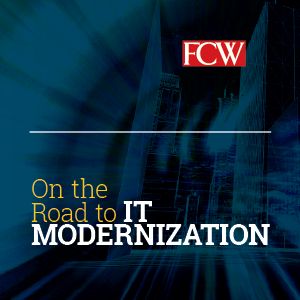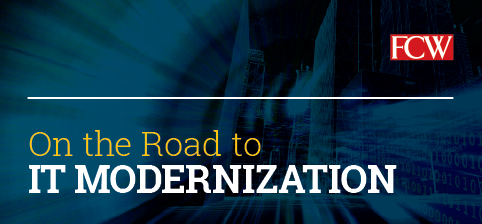A majority of government officials believe COVID-19 has accelerated their agencies’ digital transformation. Modernization affects every aspect of an agency’s IT operations and involves transforming data centers, eliminating operational silos and creating robust multi-cloud environments that improve the agility, speed and scalability of IT resources. By transforming their IT operations, agencies can boost the public’s satisfaction with government and increase employee engagement while making more effective use of taxpayer dollars. Even before the coronavirus pandemic, the government’s shifting priorities reflected this growing understanding, as in the Modernizing Government Technology Act, which was passed to help federal agencies get the money they need for ambitious modernization projects. Read the latest insights from industry thought leaders in IT modernization in Carahsoft’s Innovation in Government® report.
 The Future of Digital Transformation
The Future of Digital Transformation
“It’s essential to provide all employees with the technology tools to achieve their missions, backed with the right infrastructure. This means offering access to the resources best suited to individual user needs, making technology easy to use and maintaining security from end to end. Taking inventory of an agency’s current technology footprint and what users need to be effective is an important first step. When introducing new technology, making it easy to use enhances productivity. This includes providing necessary digital resources like virtual desktops and applications and, when possible, pre-installing apps and settings. Finally, security needs to protect the full stack — including infrastructure, virtual desktops and applications — in a way that’s resilient and automated. End-to-end security extends to decisions about the appropriate cloud environment for each workload.”
Read more insights from Dell Technologies’ Vice President of Federal Sales, Steve Septoff.
Why the Time to Modernize is Now
“A Government Accountability Office study in 2019 showed that 80% of federal agency IT budgets are spent maintaining legacy applications and systems, and that percentage has been steadily increasing. As a result, only a relatively small amount of money is available for modernization efforts. Agencies need to shift their focus because IT modernization is essential to improving mission outcomes, particularly in terms of customer and employee engagement. By modernizing and bringing data closer to frontline workers, agencies can improve interactions and outcomes. For example, studies have shown that 80% of a call center employee’s time is spent answering the same set of questions. With the help of artificial intelligence and machine learning technology, we can create chatbots and other tools that bring information right to a customer much more quickly. That approach revitalizes the agency’s relationships with customers, and it boosts satisfaction among employees because they’re not stuck doing rote tasks and can instead focus on activities that require innovation and creativity.”
Read more insights from Boomi’s Vice President of Federal, Alan Lawrence.
New Opportunities to Modernize Security
“During the coronavirus pandemic, technology has allowed us to stay connected while being socially distant and to participate in the economy without going to restaurants or retailers. It has also highlighted the need for agencies to deliver critical services even when government offices are closed to the public. Furthermore, technology has an essential role to play in helping leaders make decisions about how to manage a pandemic. With a modern IT infrastructure, the government can boost its ability to correlate data and gain critical insights into understanding who is at higher risk of contracting the disease, the most likely means of pathogen transmission, the best containment and mitigation practices, and the most effective way to do contact tracing, for example. A modern IT infrastructure is an essential tool in enabling the government to respond to current and future challenges.”
Read more insights from Secureworks’ CTO, Jon Ramsey.
The Right Approach to Secure Cloud Migration
“Cloud technology is essential to IT modernization because it enables agencies to rapidly adapt to fluctuating environments. User expectations, compliance requirements and workloads can change very quickly these days. By utilizing expert cloud managed services, agencies can accelerate their pace to stay a step ahead. In fact, a recent study from Forrester, “How Expert Managed Services Accelerate Benefits of Multicloud,” shows that the top benefits for using managed services for multicloud strategies include more time for IT staff to work on high-priority initiatives and overall faster time to value. Agencies need their applications and data to be secure as they strive to modernize their IT environments. Successful cloud deployments hinge on creating partnerships with cloud providers that are based on the tenets of trust: Security, compliance, privacy and transparency.”
Read more insights from Virtustream’s Chief Trust and Security Officer, Pritesh Parekh.
Building a Future-Ready IT Infrastructure
“Agencies are making progress in several key modernization areas, most recently in workforce mobility. Teleworking accelerated tremendously due to the pandemic. For example, the Department of Veterans Affairs increased the number of mobile devices for clinicians from about 80,000 to 220,000 in March, when the pandemic began to have an impact. Also in March, a combatant command with strict security requirements was able to shift thousands of onsite workers to remote work almost overnight. In addition to mobile devices, agency users need modern apps that are designed to run on any cloud. Many agencies are creating software factories so they can build their own applications based on containers and microservices. That approach gives agencies a tremendous amount of flexibility to add features and change their applications almost in real time — rather than the weeks, months or even years it takes to update agencies’ traditional, monolithic applications.”
Read more insights from VMware’s Senior Director of the DOD Sales Team, Michael Houlihan.
Succeeding with Software in the Modern Digital World
“It can be difficult to differentiate between true Agile software delivery and what the Defense Innovation Board (DIB) refers to as “Agile BS.” VMware Pivotal Labs uses the following four questions to measure their efforts in alignment with DIB recommendations. 1. A re you in production? Is your software accredited and available in your operational environment today? 2. Do you have user adoption? Are actual users getting operational value from your software today? 3. Who cares? Is your software capability moving the needle for the mission or business? 4. What is your cycle time? How frequently are you delivering functioning, accredited software into users’ hands?”
Read more insights from VMware‘s Directors of Strategic Programs, Mikey McCormack and Aaron Swain.
Download the full Innovation in Government® report for more insights from these IT modernization thought leaders and additional industry research from FCW.







